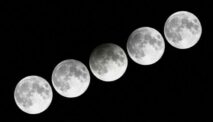Diksia.com - If we look at the sky at night or see it online, we will see the same image, which is the dark sky in space. But why is space dark even though the sun exists?
If space is full of bright stars, why doesn't the night sky glow with starlight? Why is space colorless, just as Earth's sky is blue during the day?
This classic question, known as Olbers' paradox, relates to the mystery of why the night sky is dark even though there are billions of stars in the universe. German astronomer Heinrich Olbers suggested the answer by explaining that interstellar space, when filled with matter such as dust clouds, absorbs light, which explains why the sky remains dark.
However, this hypothesis is called into question by the first law of thermodynamics. This means that interstellar matter that absorbs light generates heat and then emits light itself.
In the 20th century, Olber's paradox was finally resolved. This discovery shows that the universe continues to expand, causing light from distant galaxies to shift into the infrared, ultraviolet and radio wave spectrum invisible to the human eye. This means that unless we can detect microwaves, all of space appears to glow.
Quoted by detikINET from Orbital Today, Sunday (05/05/2024): The correct answer lies in the existence of the atmosphere. When light enters a nearly empty space, such as a vacuum with little gas and cosmic dust, the light has no object to reflect it. However, the Earth is bright because sunlight is reflected by our atmosphere.
Light travels in a straight line until it hits an object. When reflected from this object, the atmosphere causes scattering in the spectrum of light visible to the human eye. As the Earth rotates, the side not exposed to sunlight becomes dark, called night. During the day, light scattering occurs due to interactions between photons and atmospheric atoms, molecules and dust.
Much of Earth's atmosphere scatters blue light because its wavelength is shorter than red light, resulting in more scattering in the atmosphere. This is why the sky appears blue during the day.






